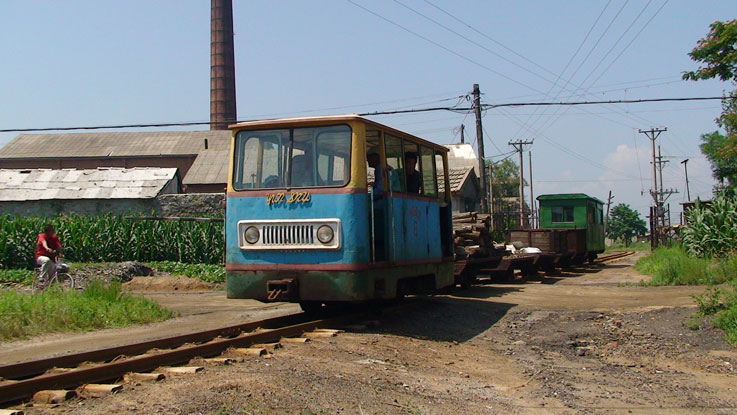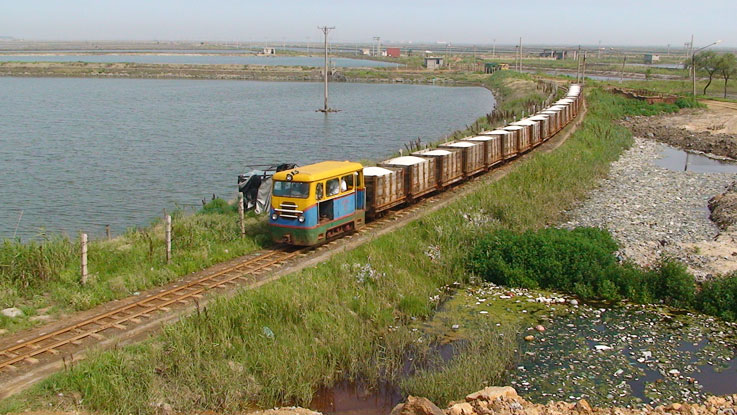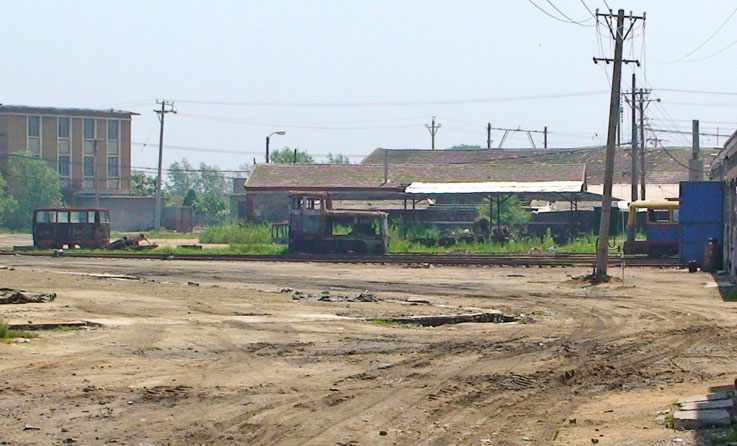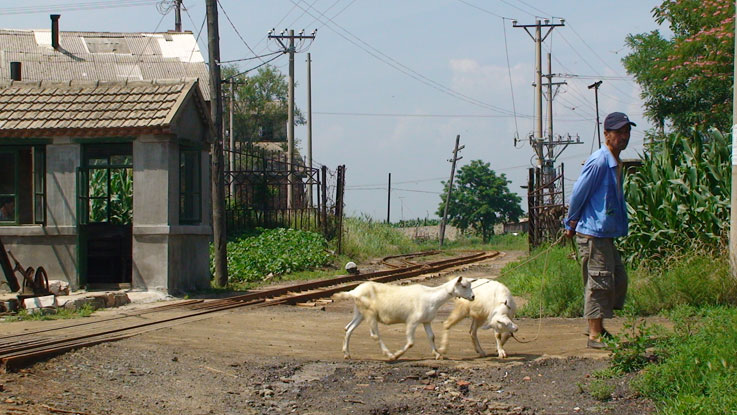

15 July 2009
From Pulandian there are buses every 10 minutes to Pikou. The buses perform a slow departure from town to maximize passengers but then it is 40km or so of good road to Pikou. However, the salt railway is not at Pikou but about 10 km of bad road north east along the coast to Jiaxinzi. As usual, there is a China Rail line with a passenger service of no use to us (or any locals). I believe there is a train around 3 am. Local 3-wheel taxis charge 15 RMB to take you to Jiaxinzi. The village is pleasantly backward and the factory is straight out of 1968 or earlier. Given the gauge (600mm), this could well be a former Japanese operation. Chairman Mao still observes the scene.

Our taxi driver kindly took us to see the railway as it exits the factory which was just as well as attempts to enter at all 3 gates were rebuffed. We did see something of the railway operation but this was not a complete success. In the morning, we had already missed one set of return workings (starting from around 5 am) as well as the return to the salt fields but did see a railbus and 2 trains return by around 10:30. We were told that the next trains would be the afternoon workings so we went off for a longish lunch before returning at 12:30. Around 1 pm the railbus came out again with a PW train.

We were expecting up to 2 trains of empties to follow but it turned out that the morning workings were 2 short trains (13 wagons each) to test out a repaired loco and there was still another train out on the salt pans. Given the convoy nature of the workings and the total lack of signalling or telephone/radio contact, it seems only the railbus can operate when trains are still out. Eventually, a long salt train (25 wagons) returned.

This was followed by the railcar with the workers from the salt fields and our (by now a bit friendlier) crossing keeper told us it was all over for the day. Our attempt to visit the depot resulted in this distant shot of dumped locos. We weren't allowed any closer.

While waiting at the crossing, this man and his goats/sheep? crossed the line.

The line appears to use 3 locos and 1 railbus. All the working locos are similar with detail differences. The salt is transferred to a big pile and then into China Rail wagons. We saw no salt leaving by road. The factory has a tall chimney but is was not clear what else needed to be done to the salt before onward shipment. The road along the coast is being improved and when finished (in one year) may also provide better access to road trucks to the salt fields. Over lunch, we were told that the salt company is letting more and more lucrative concessions to farm shrimps and other seafood in former salt pans so the long-term future of the line and the salt field is not very bright although the lack of current road haulage must give some chance of an ongoing operation even if gradually reducing.
John Raby
Pulandian